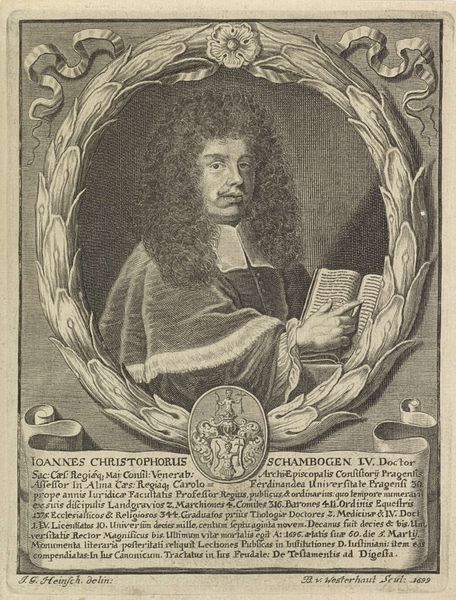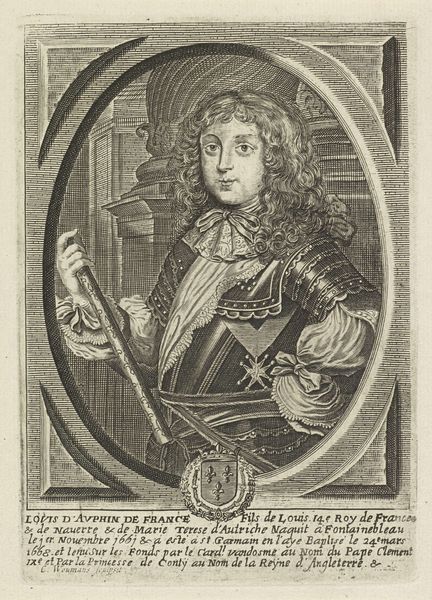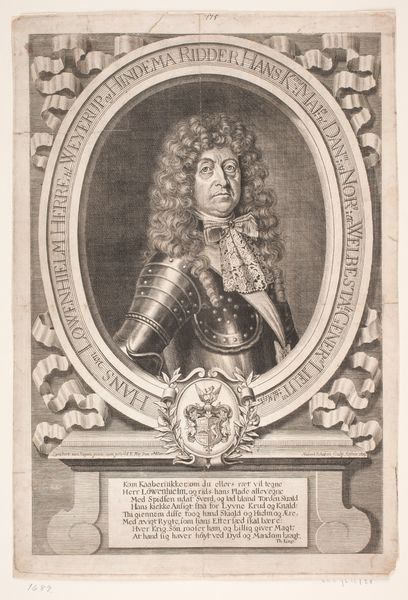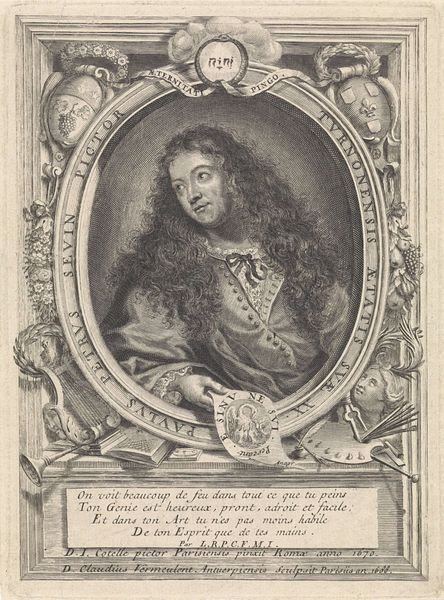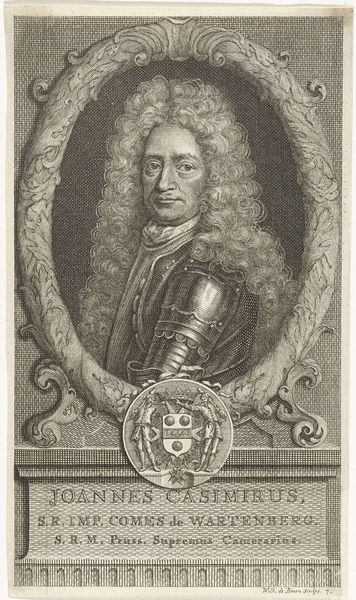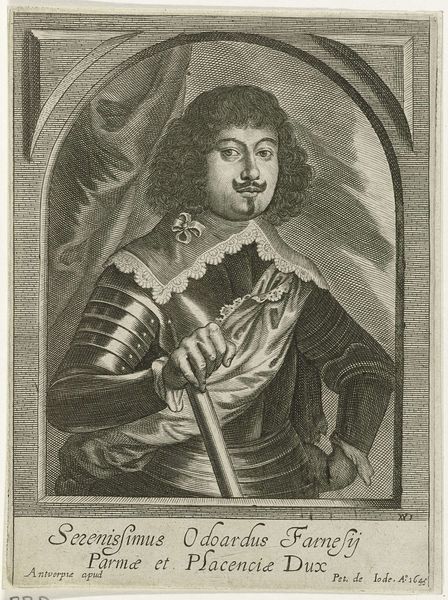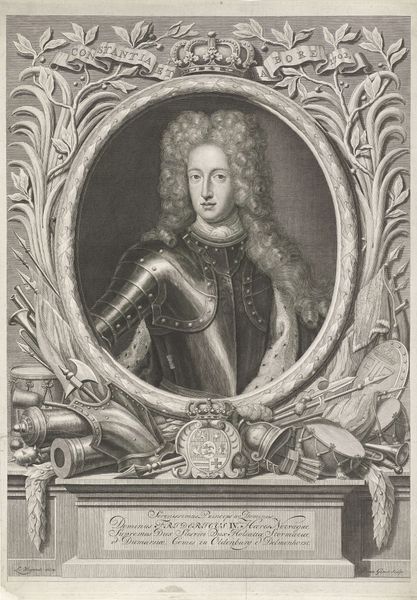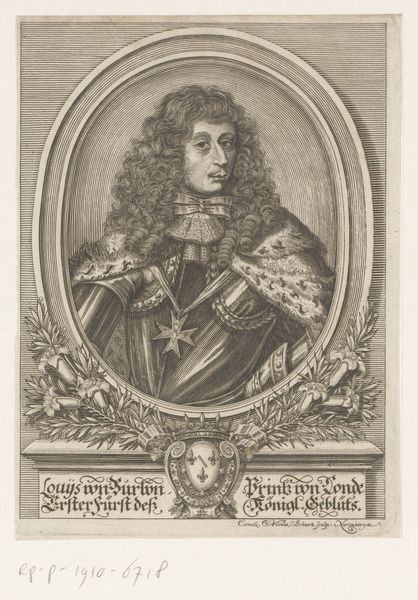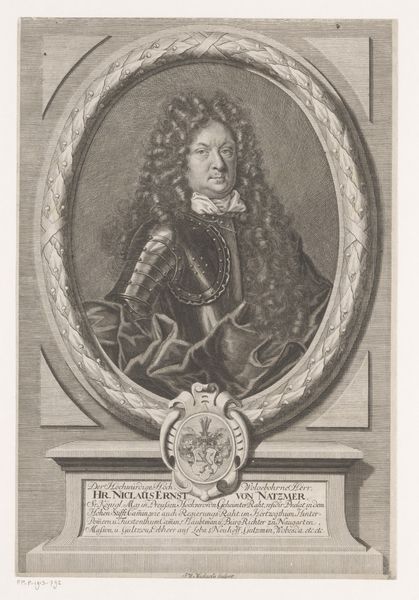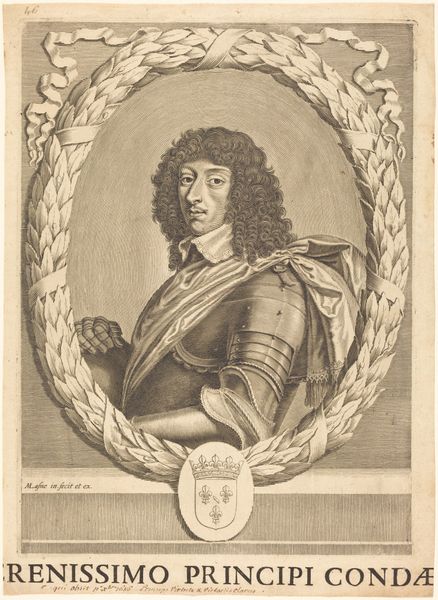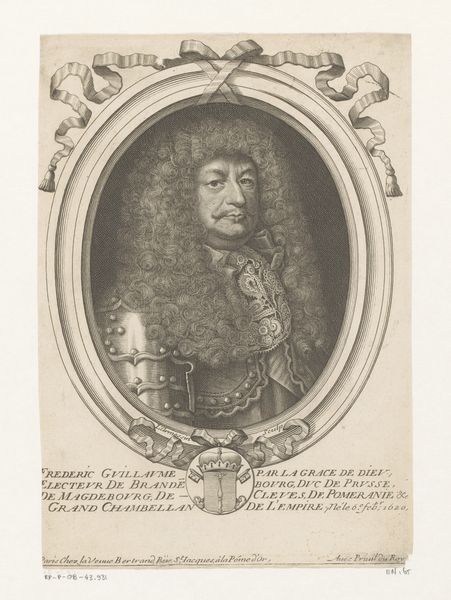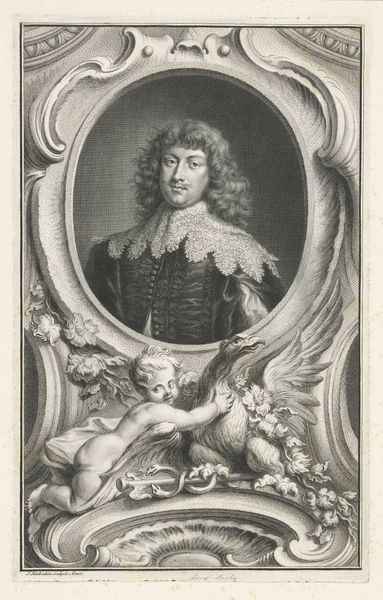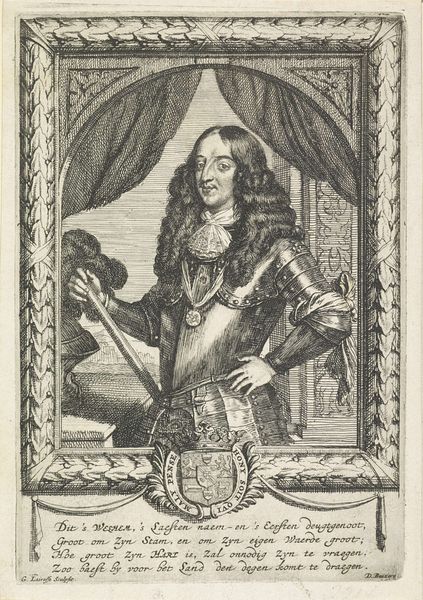
Portret van Johan Frans Desideratus, graaf van Nassau-Siegen 1650 - 1696
0:00
0:00
engraving
#
portrait
#
baroque
#
old engraving style
#
pencil drawing
#
history-painting
#
engraving
Dimensions: height 335 mm, width 263 mm
Copyright: Rijks Museum: Open Domain
Curator: An intriguing work we have here. This engraving, titled "Portret van Johan Frans Desideratus, graaf van Nassau-Siegen," comes to us from the Baroque period, circa 1650 to 1696, and the piece is signed by Richard Collin. Editor: My initial impression is one of controlled power. There's an ornate formality, almost like a theatrical presentation of status, but there's something softer, contemplative about his expression, breaking that surface. Curator: The Baroque loved that kind of spectacle. Johan Frans Desideratus held significant military and governmental roles, which is conveyed here through the armor and symbolic weapons surrounding the portrait— cannon and flags that stand out on the lower right and upper left respectively. Collin, however, wasn't creating an entirely objective likeness. This print serves a definite purpose, in crafting a legacy of a powerful dynasty. Editor: Absolutely. The imagery speaks volumes about cultural memory. Armor, for instance, historically signified protection, valor, but here, it is so detailed as to project him into the idea of military man and ruler, evoking historical continuity through this iconographic style. Curator: The Latin inscription further emphasizes this projection. While the image is important, so is what’s being stated about the sitter and his relation to notable rulers. The inscription is a clear sign this piece was used to construct and broadcast his achievements and standing to society and those to come after him. It mentions he governs land over the river Meuse. So important this claim had to be written, circulated, and kept! Editor: Note too the laurel wreath that circles Johan Frans Desideratus. This speaks not only of victory and his noble line. Curator: An incredibly astute observation! Wreaths have signified much through history, particularly in portraying rulers. It creates, on one hand, and association, and, on another, a sense of continuation between eras. This work highlights how rulers are concerned about image management and manipulating perceptions. Editor: Agreed. So, what began as merely an artistic approach is clearly enmeshed in larger socio-political meanings of power and status of this individual through the iconographic symbols chosen to broadcast them! Curator: Exactly. Looking at it now, the engraving feels less like a standalone image, but more like a window into the complicated interplay between art, identity, and legacy. Editor: A fitting portrayal of a man so concerned with historical image.
Comments
No comments
Be the first to comment and join the conversation on the ultimate creative platform.
